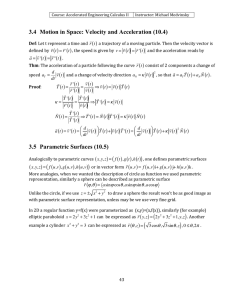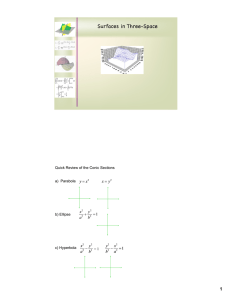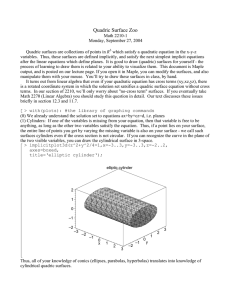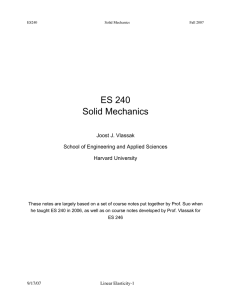Math 227 Carter Test 1 Fall 2011
advertisement
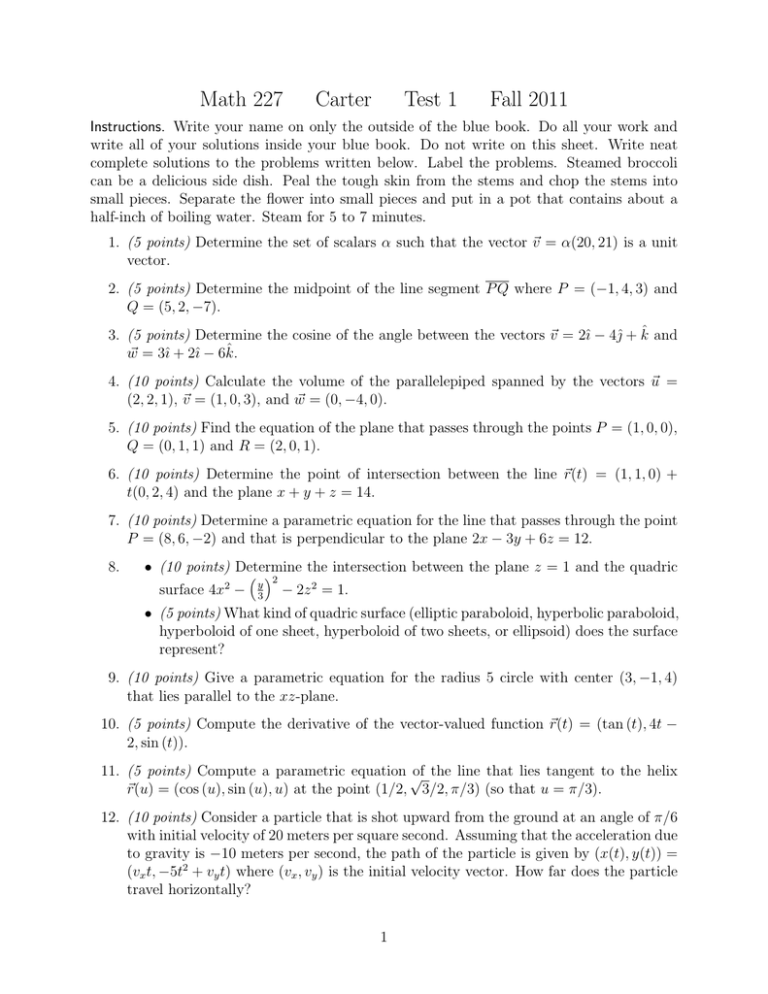
Math 227 Carter Test 1 Fall 2011 Instructions. Write your name on only the outside of the blue book. Do all your work and write all of your solutions inside your blue book. Do not write on this sheet. Write neat complete solutions to the problems written below. Label the problems. Steamed broccoli can be a delicious side dish. Peal the tough skin from the stems and chop the stems into small pieces. Separate the flower into small pieces and put in a pot that contains about a half-inch of boiling water. Steam for 5 to 7 minutes. 1. (5 points) Determine the set of scalars α such that the vector ~v = α(20, 21) is a unit vector. 2. (5 points) Determine the midpoint of the line segment P Q where P = (−1, 4, 3) and Q = (5, 2, −7). 3. (5 points) Determine the cosine of the angle between the vectors ~v = 2ı̂ − 4̂ + k̂ and w ~ = 3ı̂ + 2ı̂ − 6k̂. 4. (10 points) Calculate the volume of the parallelepiped spanned by the vectors ~u = (2, 2, 1), ~v = (1, 0, 3), and w ~ = (0, −4, 0). 5. (10 points) Find the equation of the plane that passes through the points P = (1, 0, 0), Q = (0, 1, 1) and R = (2, 0, 1). 6. (10 points) Determine the point of intersection between the line ~r(t) = (1, 1, 0) + t(0, 2, 4) and the plane x + y + z = 14. 7. (10 points) Determine a parametric equation for the line that passes through the point P = (8, 6, −2) and that is perpendicular to the plane 2x − 3y + 6z = 12. 8. • (10 points) Determine the intersection between the plane z = 1 and the quadric 2 surface 4x2 − y3 − 2z 2 = 1. • (5 points) What kind of quadric surface (elliptic paraboloid, hyperbolic paraboloid, hyperboloid of one sheet, hyperboloid of two sheets, or ellipsoid) does the surface represent? 9. (10 points) Give a parametric equation for the radius 5 circle with center (3, −1, 4) that lies parallel to the xz-plane. 10. (5 points) Compute the derivative of the vector-valued function ~r(t) = (tan (t), 4t − 2, sin (t)). 11. (5 points) Compute a parametric equation √ of the line that lies tangent to the helix ~r(u) = (cos (u), sin (u), u) at the point (1/2, 3/2, π/3) (so that u = π/3). 12. (10 points) Consider a particle that is shot upward from the ground at an angle of π/6 with initial velocity of 20 meters per square second. Assuming that the acceleration due to gravity is −10 meters per second, the path of the particle is given by (x(t), y(t)) = (vx t, −5t2 + vy t) where (vx , vy ) is the initial velocity vector. How far does the particle travel horizontally? 1
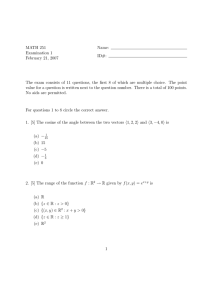
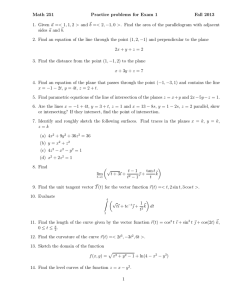
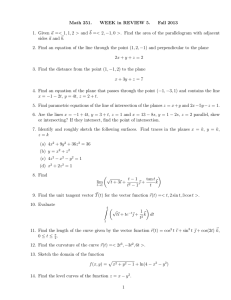

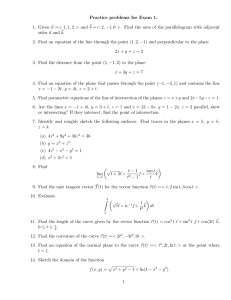
![1S11 (Timoney) Tutorial sheet 4 [October 16 – 19, 2012] Name: Solutions](http://s2.studylib.net/store/data/010731547_1-5ce3d469134fd55ec20cbcc88f4d82c5-300x300.png)
